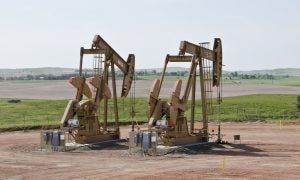 With President Trump’s announcement this week to slap a 30 percent tariff on imported solar cells and modules, the solar industry once again finds itself in the firing line, targeted by the political whims of elected officials.
With President Trump’s announcement this week to slap a 30 percent tariff on imported solar cells and modules, the solar industry once again finds itself in the firing line, targeted by the political whims of elected officials.
This political posturing has created uncertainty in the marketplace. In the last decade, solar has suffered from seven changes to the investment tax credit. And in the last few months, the industry got a double whammy of the BEAT tax – which will negatively affect equity investments in solar development – and the threat from the Department of Energy’s plan to prop up dirty coal while undermining solar. The tariff decision this week – a protectionist attempt by Trump to appeal to his anti-free trade base – is the latest assault on clean energy and a tax on American families, businesses, and utilities who want to go solar. Republicans once considered such actions a “tax on consumers.”
Despite these attacks, solar is still booming. Solar Energy Industries Association (SEIA) reports that in the last five years, the U.S. solar industry has attracted more than $100 billion in investment, realized year-over-year growth rates of 21 percent, and now employs more than 260,000 people. The tariff may slow the growth of solar, but it doesn’t kill its competitiveness. Read More »
 Much is known about the methane pollution coming from New Mexico’s oil and gas industry. Scientists studying methane emissions have found the nation’s most concentrated cloud of methane shrouding the state’s San Juan Basin. And since methane is the primary components of natural gas, we know the state’s operators are wasting hundreds of millions of dollars per year because of these leaks.
Much is known about the methane pollution coming from New Mexico’s oil and gas industry. Scientists studying methane emissions have found the nation’s most concentrated cloud of methane shrouding the state’s San Juan Basin. And since methane is the primary components of natural gas, we know the state’s operators are wasting hundreds of millions of dollars per year because of these leaks.













